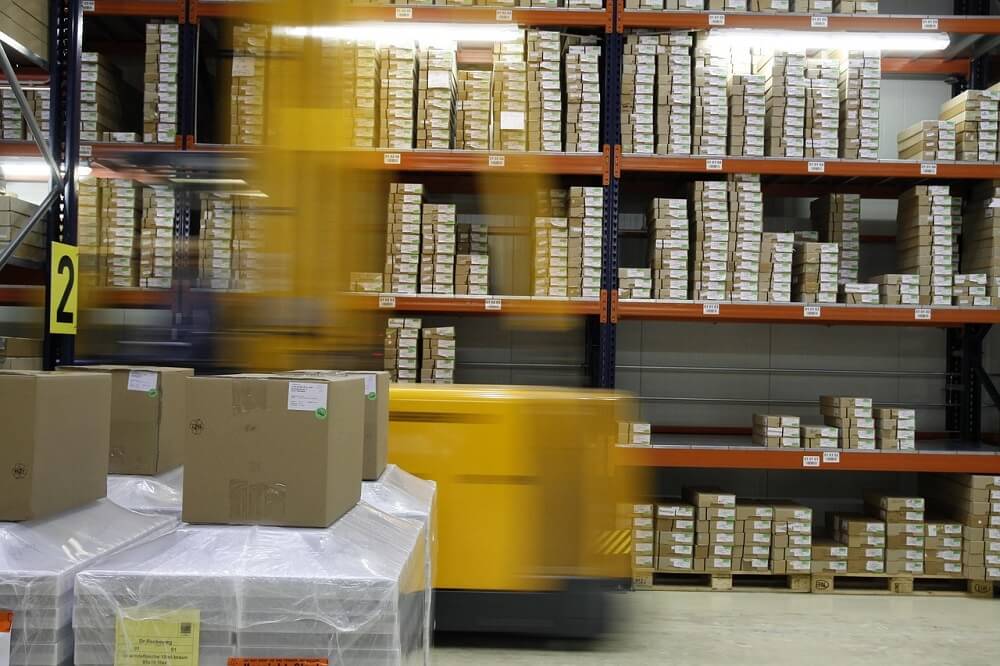Many companies struggle to track their shipments and delivery progress. Without clear information, delays and confusion increase. This article shows how to improve shipment tracking solutions, gain more control, and make better decisions using tools like real-time shipment updates and ERP for logistics. Start improving your process today!
How shipment transparency improves logistics performance
Tired of wondering where your shipments are or dealing with unexpected delays? You’re not alone. Many businesses face similar challenges. The ability to track shipments in real-time and get real-time shipment updates isn’t just a convenience anymore—it’s necessary for smooth logistics operations.
Shipment transparency = faster decisions and better customer service.
With the rise of global shipping, managing orders without a centralized system can create confusion. Businesses that implement strong shipment tracking solutions often reduce missed deliveries, improve planning accuracy, and maintain stronger communication with partners. Customers also benefit from delivery status monitoring, which reduces the number of support inquiries.
Greater supply chain visibility allows you to:
- React quickly to disruptions
- Coordinate better across teams
- Deliver more consistent service
Let’s say a delivery is delayed at a customs checkpoint. Without access to accurate tracking shipments in real-time, your team can’t inform customers, which increases frustration. But if your logistics control systems are in place, you can quickly update delivery estimates and redirect resources.
Companies using systems like ERP for logistics also gain insights from historical data, helping forecast future patterns. With better control, you manage today’s shipments and continuously optimize supply chain operations for tomorrow.
Biggest obstacles to gaining control over shipping operations
Even with advanced tools available, many companies still struggle with visibility. Why? Because controlling shipments involves more than just installing software.
The three biggest blockers to shipment control are:
- Fragmented systems that don’t talk to each other
- Lack of training and process consistency
- Poor integration of transport data integration tools
Outdated manual tracking—like spreadsheets or basic emails—leaves too much room for error. When your order system, warehouse platform, and delivery data live in different silos, getting a full picture becomes nearly impossible. Without shipment tracking solutions, you’re forced to chase updates from various sources, wasting time and resources.
Another common barrier is inconsistent process ownership. If different teams handle orders, inventory, and logistics separately, the result is delayed responses and poor communication. What you need is a unified approach where everyone works from the same set of real-time shipment updates.
And don’t forget cross-border complexity. Regulations, documentation, and multiple carriers increase the chance of errors. International shipping quickly becomes chaotic without strong container tracking capabilities and compliance visibility.
Even large businesses can struggle here. That’s why software providers like Visco Software are helping mid-sized firms improve process coordination without the heavy customization large ERP systems often require.
Technologies that enable real-time visibility into shipments
Now, let’s talk solutions. What actually helps you gain control? The answer lies in tools that enable tracking shipments in real-time—not just passive updates every 12 hours.
Start with IoT-based sensors. These devices monitor temperature, humidity, and location—ideal for temperature-sensitive goods or high-value cargo. Then there’s GPS tagging, which powers Container Tracking globally. These tools plug into logistics control systems to provide accurate ETAs and route updates.
Cloud-based platforms are also critical. They connect suppliers, carriers, and customers in one dashboard. This is where supply chain visibility becomes real—a report and a live overview of every moving part.
What does that mean in practice?
- Your customer service team sees the same status as your warehouse team
- Alerts trigger automatically for delayed shipments
- Delivery statuses are updated every time a checkpoint is reached
That’s the power of real-time shipment updates.
Blockchain also plays a growing role. While it’s not used in every shipment, its secure, tamper-proof ledger is ideal for sensitive or high-value supply chains. Combine that with ERP for logistics, and you’re no longer working from guesswork—you’re making decisions based on live data.
Companies like Visco Software help integrate these technologies with your existing systems so you’re not starting from scratch.
Integrating shipment tracking tools with your ERP system
Technology works best when it’s connected. If your shipment software doesn’t communicate with your core operations platform, you’re likely duplicating work or missing key data. That’s why transport data integration is key when trying to improve shipping transparency.
A good global ERP software should include native support for shipment tracking solutions or offer API access to integrate external systems. This way, your shipping data automatically updates your inventory levels, invoices, and delivery timelines.
Here’s what strong integration allows you to do:
- See open orders and shipment statuses in one place
- Trigger automatic billing once items are confirmed delivered
- Plan purchasing around actual delivery times, not estimates
If your team manually copies data between systems, it’s time to rethink your workflow. Modern ERP for logistics platforms eliminates these repetitive tasks and ensures every team works from real-time information.
Choosing the right tools to manage tracking shipments in real time means fewer manual updates, lower error risks, and more confident planning. But integration is key. Tools should be evaluated not just for features but also for how easily they can plug into your tech stack.
When these systems are aligned, it becomes easier to spot delays, improve resource planning, and optimize supply chain operations.
Practical steps to increase control over international deliveries
Managing local shipments is one thing. However, the stakes are higher when dealing with overseas routes, customs documentation, and multiple transport modes. So, how do you improve control here?
Start by ensuring every shipment has a unique tracking ID supported by Container Tracking software. This ID should be traceable across all platforms—from carrier sites to your internal systems. Combine that with delivery status monitoring, and you’ll always be a step ahead.
Next, ensure documentation is digitized and accessible to all stakeholders. Border delays often happen because paperwork is incomplete or late. When using shipment tracking solutions, link critical documents like invoices and certificates directly to the tracking interface.
Use your logistics control systems to:
- Set alerts for customs holds or delivery exceptions
- Track handoffs between shipping partners
- Manage language and compliance variations across regions
Perhaps most importantly, train your team to understand the entire process. A platform is only as good as the people using it. Make sure your operations team knows how to read customs statuses, interpret port delays, and act on alerts.
Final tip? Use data from past shipments to build a playbook. Patterns repeat. The more you track with real time shipment updates, the more you can predict and plan—turning surprises into manageable events.
Improving international delivery control = fewer delays, less cost, and happier customers.





